MARIANI’SVirtual
Gourmet
May
18, 2014
NEWSLETTER
HOME
| BOOKS
| ABOUT US
| CONTACT
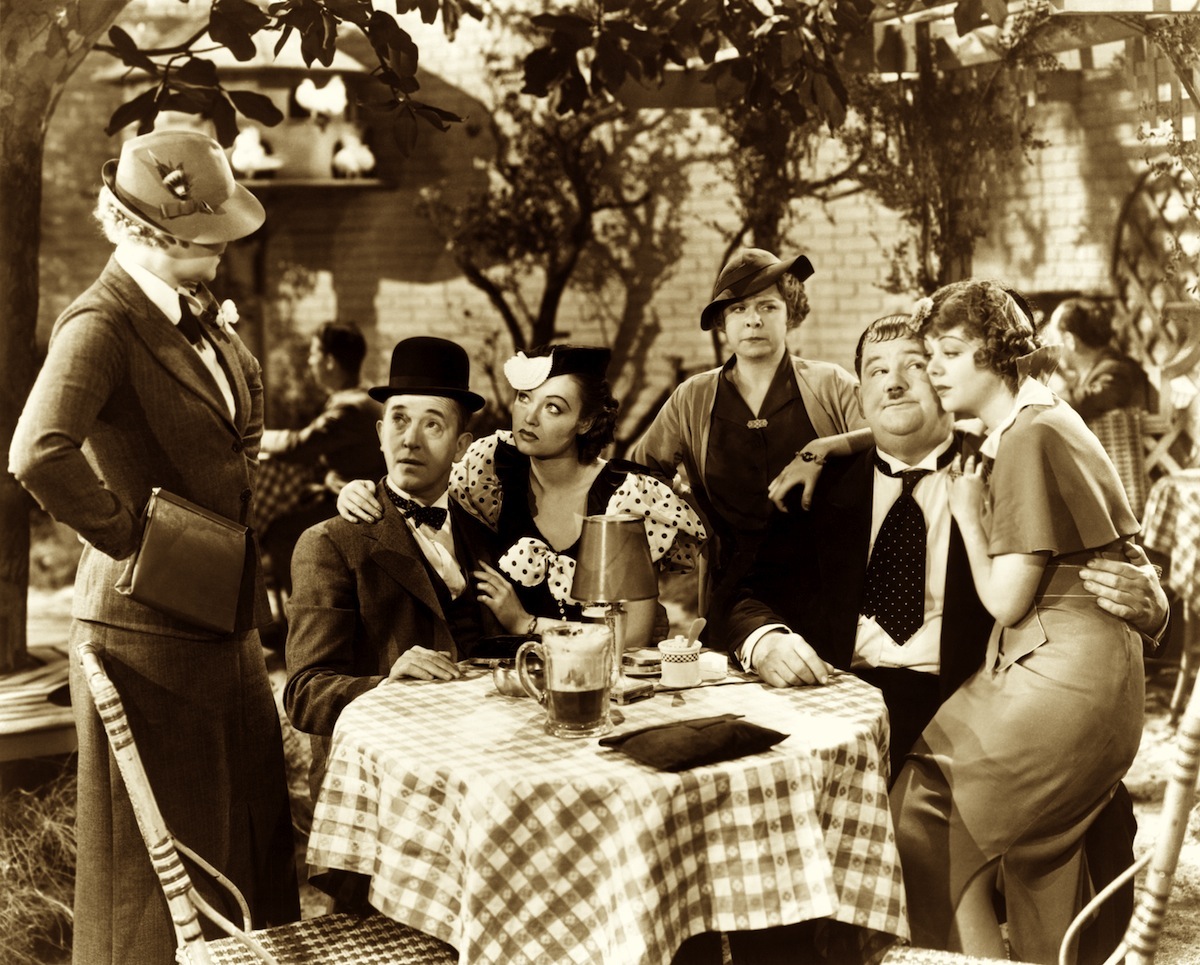
Betty Healy,
Stan Laurel, Lorna Andre, Daphne Pollard,
Oliver Hardy and Iris Adrian in "Our
Relations" (1936)
Beginning May 27th, for five consecutive weeks on Tuesdays, John Mariani will be teaching a seminar class in "Food Writing" at Sarah Lawrence College in Bronxville, NY. It is open to the general public. For details contact: Center for Continuing Education & Special Programs, Sarah Lawrence College,1 Mead Way, Bronxville, NY 10708;Telephone: 914-395-2205; http://www.slc.edu/ce/cce/index.html
IN THIS ISSUE
DC Dining
By John Mariani
Applebee’s
of
the Air:
American Airlines First Class Dinner
By Andrew Chalk
NEW YORK CORNER
Gramercy Tavern
By John Mariani
NOTES FROM THE WINE CELLAR
Penfolds Celebrates Its 170th Anniversary in London
By John Mariani
❖❖❖
DC DINING
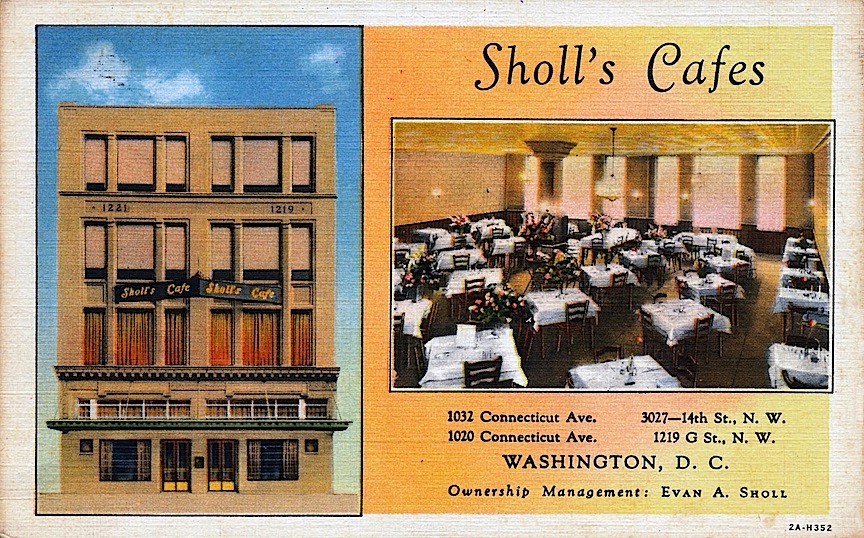
By John Mariani
With all the wrangling going on in Washington--interrupted only by frequent Congressional vacations--it’s surprising the politicians ever get to go out to dinner. Indeed, the sighting of a major political figure at a restaurant is sufficient fodder for the local newspapers (those that are left), though a true celebrity is even better for the media mill.
Still, the nation's capital is a solid dining city, frequented by those who live in and around it and by the millions of tourists who visit. Here are some of my favorite new spots in town.
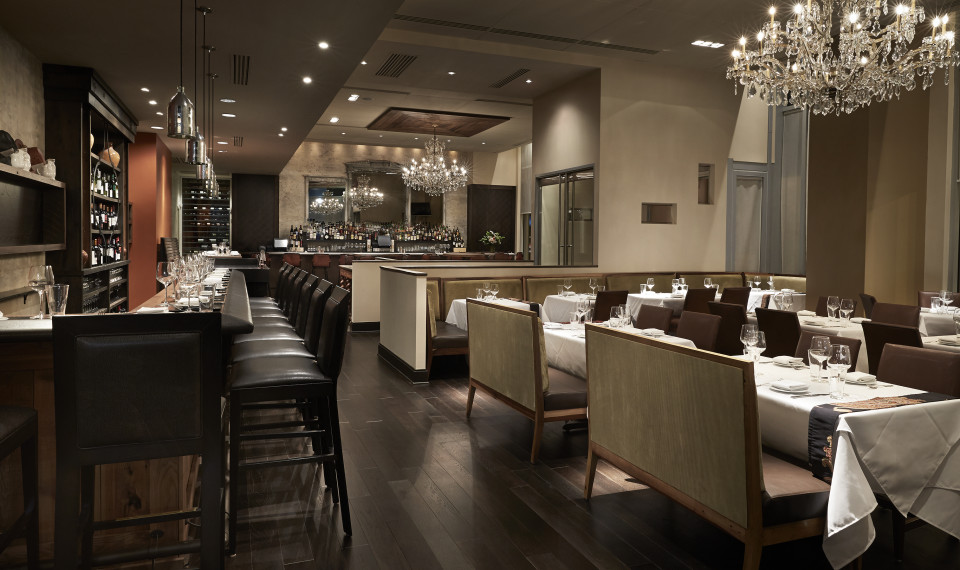 DEL CAMPO
DEL CAMPO
777 I Street NW
202-289-7377
What hits you first as you enter Del Campo is the aroma of sweet smoke coming off everything from skirt steak and sweetbreads to charred beets and mortadella cheese sizzling on the huge grill that underpins most of the cooking at this grand South American restaurant located next to D.C.’s Chinatown.
Peruvian
Chef
Victor Albisu, whose grandfather was a Cuban baker
and whose mother ran a market where her son learned
to grill from Argentinean and Uruguayan butchers,
has focused his expertise and energies to create a
meat-centric menu on which everything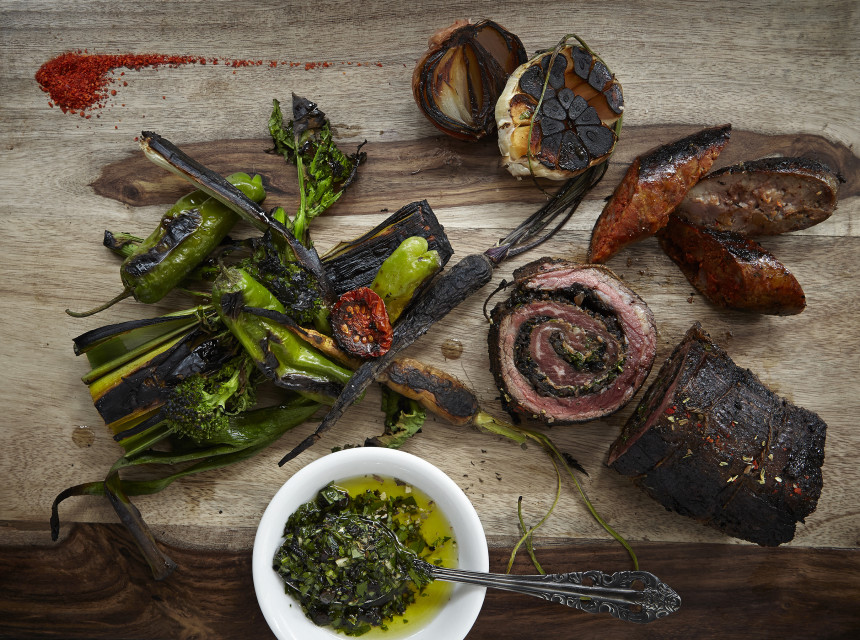 shares
common ground. Even seafood and ceviches are lashed
with good olive oil and share the plates with
chilies, charred onions and corn, yucca fries, tangy
romesco sauce, chimichurri and salsa criolla.
Bread is baked in cast-iron skillets,
and, when the
kitchen closes, the bar serves street
food--empanadas, albondigas,
chicharones, and a chivito
sandwich ($20) stuffed with seared ribeye,
mortadella, ham, olives, hearts of palm, and fried
egg.
shares
common ground. Even seafood and ceviches are lashed
with good olive oil and share the plates with
chilies, charred onions and corn, yucca fries, tangy
romesco sauce, chimichurri and salsa criolla.
Bread is baked in cast-iron skillets,
and, when the
kitchen closes, the bar serves street
food--empanadas, albondigas,
chicharones, and a chivito
sandwich ($20) stuffed with seared ribeye,
mortadella, ham, olives, hearts of palm, and fried
egg.
The heart of the matter here is the array of meats: chorizo sausage (four kinds), short ribs, ribeye, lamb shank, pork belly, all gleaming, fat-rich, generously sliced and piled high, and whether deep red, rosy or pink, always charred black ($9-$72).
You
feast
on all this in a splendidly expansive dining room
with concrete walls and oak floors, antique mirrors
and chandeliers, worn leather chairs and South
American antiques. If Peruvian food in this
country needs a template for the future, Del Campo
is surely one of the most exciting new restaurants
of this era.
Del
Campo is open for lunch Mon.-Fri. and for dinner
nightly.
FUEGO COCINA
Y TEQUILERIA
2800 Clarendon Boulevard
Arlington, VA
571-970-2180
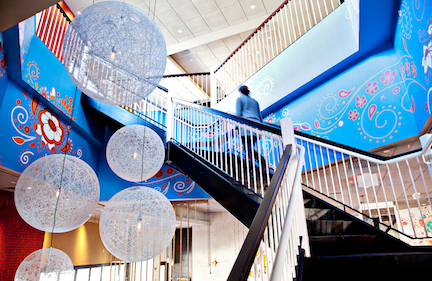 Another
Latin-American
restaurant--this time mostly Mexican--has made a big
splash over in Arlington, Virginia, where Chef Jeff
Tunks, Gus DiMillo, and David Wizenberg took over a
defunct, two-story eatery and turned it into a riot
of color, with Aztec-style tiles and textiles,
mirrors and a copper-clad fire pit, a 50-foot bar
with gleaming shelves stocked with more than 120
tequilas (the signature margaritas are terrific),
brushed metal barstools, a grand staircase and an
outdoor patio. The name of the restaurant means
“fire kitchen and tequila bar.”
Another
Latin-American
restaurant--this time mostly Mexican--has made a big
splash over in Arlington, Virginia, where Chef Jeff
Tunks, Gus DiMillo, and David Wizenberg took over a
defunct, two-story eatery and turned it into a riot
of color, with Aztec-style tiles and textiles,
mirrors and a copper-clad fire pit, a 50-foot bar
with gleaming shelves stocked with more than 120
tequilas (the signature margaritas are terrific),
brushed metal barstools, a grand staircase and an
outdoor patio. The name of the restaurant means
“fire kitchen and tequila bar.”
This
is
one of Passion Food Hospitality’s many local
restaurants, which include DC Coast, Acadiania,
Ceiba, and Passion Fish, and the largess of this
newest enterprise is part of the company’s usual
m.o.--make it big, make it fun, make it authentic.
Tunks and his crew spent considerable time 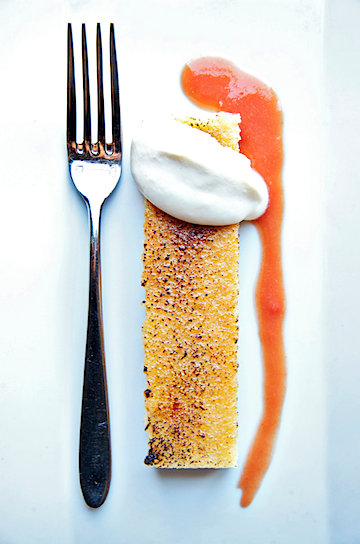 enlivening
traditional Mexican cooking, so start off with a few
botanas,
Mexican cold and hot plates such as the quesadilla de
jaiba packed with lump crabmeat and three
chile sauces ($10), or the flautas de
pato of juicy shredded duck confit with
Oaxacan white cheese and a black mole sauce ($9).
enlivening
traditional Mexican cooking, so start off with a few
botanas,
Mexican cold and hot plates such as the quesadilla de
jaiba packed with lump crabmeat and three
chile sauces ($10), or the flautas de
pato of juicy shredded duck confit with
Oaxacan white cheese and a black mole sauce ($9).
There are several tangy ceviches and main courses--if you can stop yourself from ordering the small plates--include a pozole verde of hominy with slowly braised pork and green chile ($8); a vegetarian chile with avocado and crème ($8); and a “sizzling skillet” of meats, corn, and tortillas (market price).
Along with a fine tres leches cake (right) with cream cheese icing and guava sauce ($7), there are desserts you won't find in typical D.C. Mexican eateries, like torejas, a Mexican-style pressed French toast with vanilla ice cream, and cajeta cheese.
The Latin American bottlings on the wine list are exceptional.
Open for dinner
seven nights a week; Tacos & Tortas Mon.-Fri.
and for brunch Sat. & Sun.
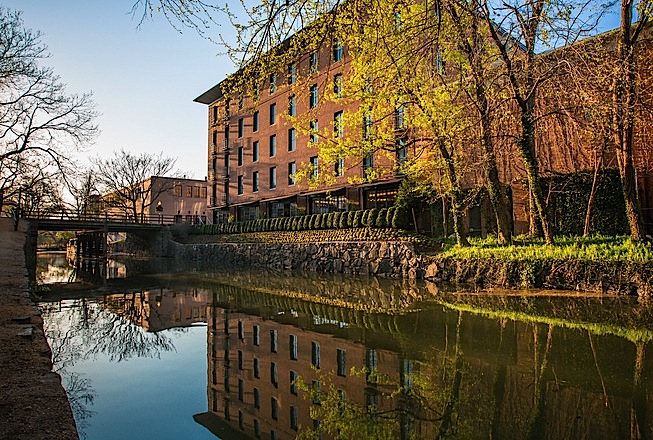 CAPELLA
HOTEL
CAPELLA
HOTEL
1050 31st St NW
202- 617
2400
The
most
modern and exciting new hotel in the Capital is
Capella, located above the C&O Canal in
Georgetown and designed by Peter Silling. (Capella
also has hotels in Bangkok, Dusseldorf, Singapore
and Cabo San Lucas.) The minimalist brickwork of the
exterior opens to a glittering foyer and
high-ceilinged, very comfortable Living Room, where
you may have coffee and rolls in the morning or
drinks later on, and artisan craftsmen have been
hired to work the polished Austrian woodwork
throughout. 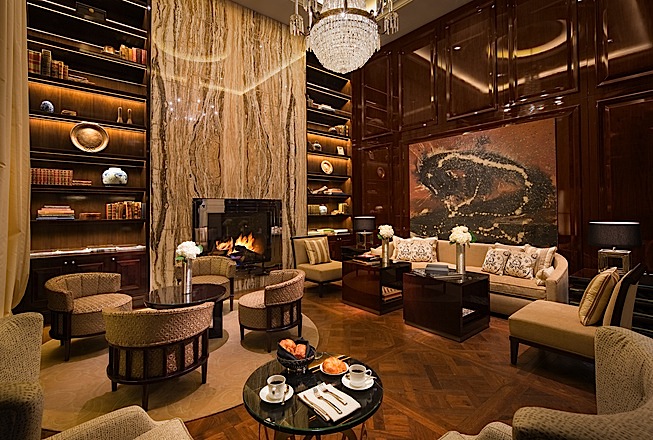
There are 49 guest rooms and 12 suites, with personal assistants assigned to you who can easily and efficiently tend to any request. In my case, a lost bag, left in the taxi, was retrieved within an hour of my arrival.
The
swank
26-seat Rye Bar has become a prime watering hole in
Georgetown, and the sleek 70-seat Grill Room,
overlooking the Canal, is where Chef Jacob Esko,
from Sweden, shows off his commitment to buying very
fine beef that includes a 40-day dry-aged Virginia
Prime ribeye with Smoked Gouda, caramelized onions,
porcini
gratin, beets and a smoked sauce laced with rye for
$56--which is $9 less than the steak alone at
Bourbon Steak around the corner at The Four
Seasons.
This, like many other dishes,  including
fish, Esko cooks on the bone to retain the food’s
juiciness. There’s a bargain $29 three-course lunch.
And there is a daily rotisserie item, such as
chicken with mashed potatoes and vegetables ($29),
and pork tenderloin brined in honey mustard with
wild mushrooms, fiddlehead ferns and pea sprouts
with gnocchi and Sherry sauce ($32).
including
fish, Esko cooks on the bone to retain the food’s
juiciness. There’s a bargain $29 three-course lunch.
And there is a daily rotisserie item, such as
chicken with mashed potatoes and vegetables ($29),
and pork tenderloin brined in honey mustard with
wild mushrooms, fiddlehead ferns and pea sprouts
with gnocchi and Sherry sauce ($32).
The
wine list could be a lot longer and less pricey than
it currently is.
I
also like the nice touches like the
Champagne cart with some exclusive Taittinger
labels, the beef tartare prepared tableside
($20-$26), and the dessert cart, which offers a
made-on-the-spot baked Alaska. Those who shrug
that fine dining is dying should see how it's been
reformulated in the sleek style of The Grill Room.
The Grill Room is open for breakfast, lunch and
dinner daily.
NOPA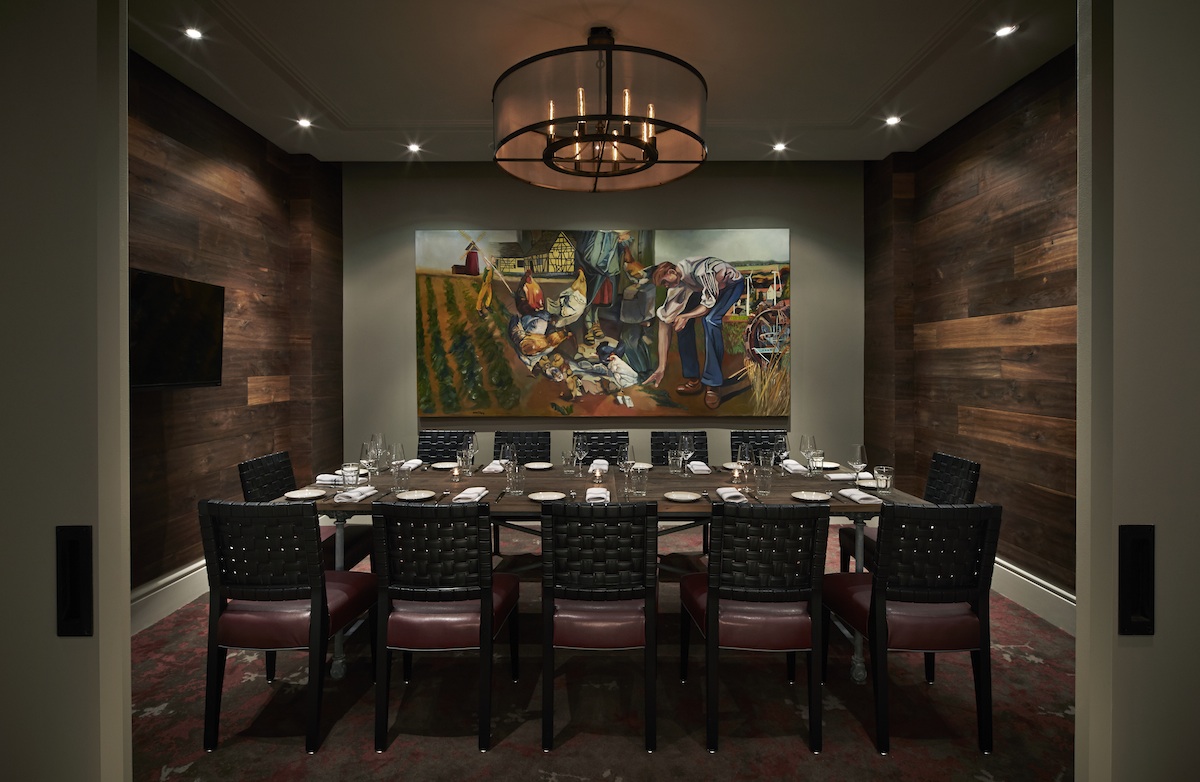
800 F Street, NW
202-347-4667
Billed as an “American Brasserie with French and Asian influences,” this new 160-seat restaurant in Penn Quarter is run by the redoubtable Ashok Bajaj of the Knightsbridge Restaurant Group, which also owns the superb Indian dining room Rasika and the fine Italian spot Bibiana. Far less focused than those others, Nopa aims to hit too many niches--from raw bar and snacks to sandwiches and burgers, but there is plenty to love on the menu.
When I visited, the main dining room, done in white
brick, rough wood paneling and steel accents, was
outlandishly loud, but I’m told that baffling was
put in to tamp down the noise; in 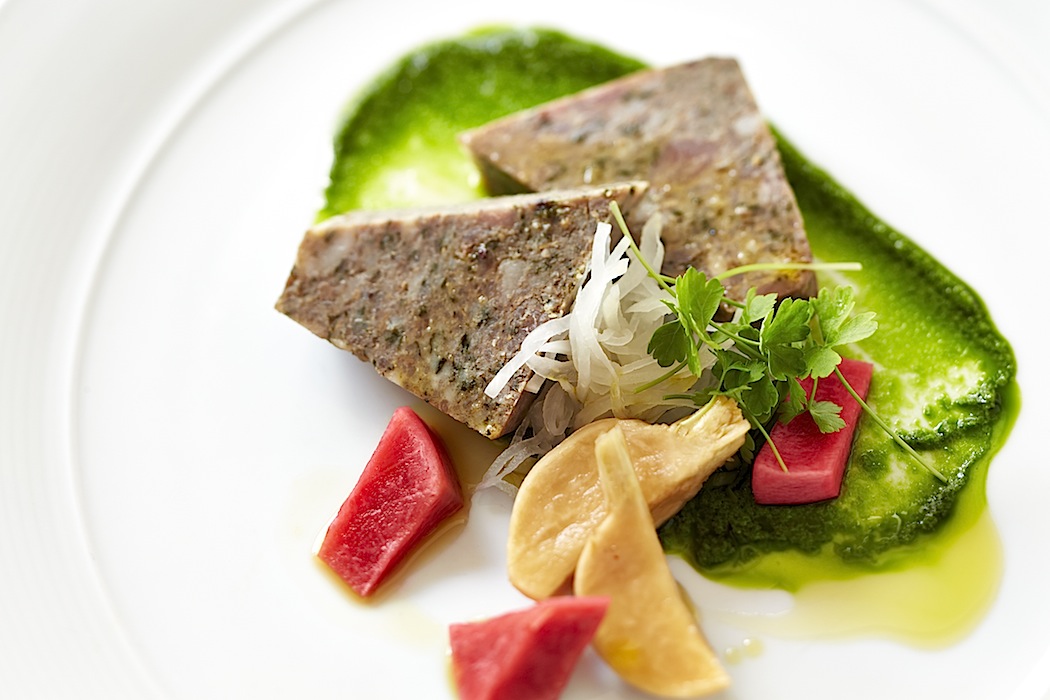 any case, the room away from the main
one is quieter.
any case, the room away from the main
one is quieter.
Chef Greg McCarthy, who worked with Jean Georges Vongerichten in New York for six years and at Nobu 57 there, has a talent for richly flavored food, evident in his Chilean sea bass with baby eggplant and spring peas shot through with wasabi ($28); a vegetarian will be over the moon for the glazed vegetable pastiche in a sweet-sour broth with black quinoa ($18). I also loved the roasted rockfish with citrus salsa and fingerling potatoes, and, in season, the crisp soft-shell crab with a lush avocado puree scented with basil.
The
best starter I tried was an expertly rendered
terrine of foie gras with carrot and ginger.
For dessert, you can hardly go wrong with the
freshly baked madeleine cookies ($7) or the
chocolate nougat bar with roasted almond toffee
($9). And for those with a soul for the South,
don’t miss the fried strawberry pies with fromage blanc
ice cream ($9).
Nopa is open Mon.-Fri. for lunch and dinner, Sat. for dinner and Sun. for Champagne brunch ($30) and dinner.
❖❖❖
Applebee’s
of the Air: American Airlines First Class Dinner
By Andrew Chalk
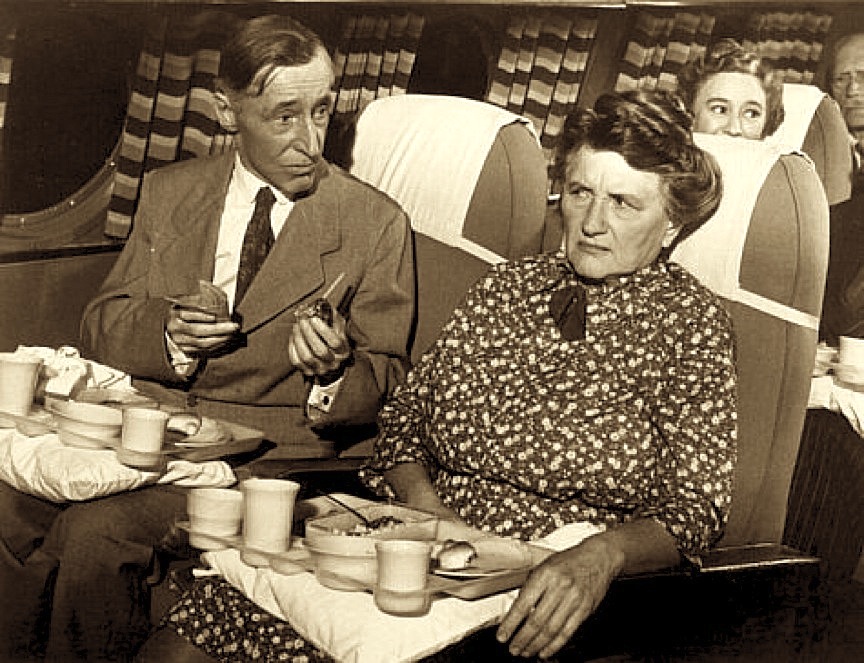
Flying
back first class from London gave me a chance to
board first, sleep on a full-flat seat and take on
board something larger than a reading glasses case
without being charged more than the price of half
a tank of gas. Another perk of first
class travel is first class food. American
Airlines says its menu selections are “inspired by
you and created by our experienced culinary team.
So sit back, and satisfy your cravings with the
fine cuisine offered onboard.” They then say:
“Satisfy your palate with our chef-inspired menu
options that range from succulent entrées
to light and refreshing selections.”
 Buoyed by such promises,
I eagerly awaited meal service. The glossy,
printed menu informed me that I would start with an
amuse-bouche of “Chicken Pakora with Mango Chutney”
(right).
The wait was not to be long. Cabin staff bustled
around in the kitchen and reappeared with china
bowls containing . . . containing what? Two
spherical mediocrities on
Buoyed by such promises,
I eagerly awaited meal service. The glossy,
printed menu informed me that I would start with an
amuse-bouche of “Chicken Pakora with Mango Chutney”
(right).
The wait was not to be long. Cabin staff bustled
around in the kitchen and reappeared with china
bowls containing . . . containing what? Two
spherical mediocrities on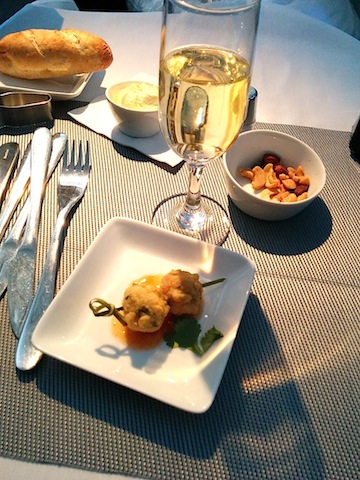 a cocktail stick atop a
miserly portion of chutney. The uninspiring
appearance turned out to be this dish’s biggest
strength. In the mouth, these pakora were just
glutinous balls of tasteless glop. Either the recipe
had gone wrong in the kitchen, or these were made of
those resins you see on documentaries about
industrial plastics. These images show the light
snack fritters that I was expecting and they bear no
relation to the dense, leaden orbs that we were
served.
a cocktail stick atop a
miserly portion of chutney. The uninspiring
appearance turned out to be this dish’s biggest
strength. In the mouth, these pakora were just
glutinous balls of tasteless glop. Either the recipe
had gone wrong in the kitchen, or these were made of
those resins you see on documentaries about
industrial plastics. These images show the light
snack fritters that I was expecting and they bear no
relation to the dense, leaden orbs that we were
served.
On
to the starter. I passed on the Thai Chicken and
went with the choice of smoked salmon. Salmon is
always a good bet at 35,000 feet, owing to its
strong taste, and smoked salmon has the strongest
salmon taste (below).
If the previous course had been arranged by an
apprentice on his first day, then this was his
second effort. He seemed to have grasped the
rudiments of presentation and constructed a dish
that could, with the shaping of the cream cheese and
the placement of the folded 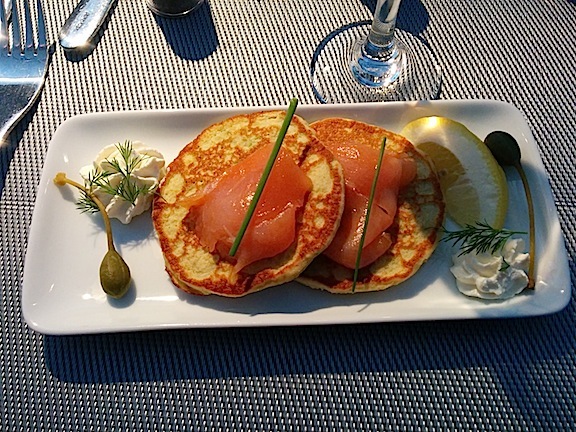 salmon slices
on the blinis, be described as appetizing to look
at. The taste was more of a mixed bag. The
strong points were the forceful taste of the salmon
(likely raised in a concentration farm in Scotland)
on the blinis along with those large capers. But the
spring peas in the blinis were bland and the cream
cheese must have been some leftover pus from the
documentary that inspired the first course.
salmon slices
on the blinis, be described as appetizing to look
at. The taste was more of a mixed bag. The
strong points were the forceful taste of the salmon
(likely raised in a concentration farm in Scotland)
on the blinis along with those large capers. But the
spring peas in the blinis were bland and the cream
cheese must have been some leftover pus from the
documentary that inspired the first course.
Thus far, American Airlines
wasn’t doing well. I wanted the names of those chefs
who had inspired these dishes. Had they flunked out
of the first week of "Hell’s Kitchen"? Did they
stage at White Castle?
Morel mushroom soup tasted like morel
mushroom soup and even looked attractive with its
deep earth tones against the backdrop of its white
serving bowl. But Americans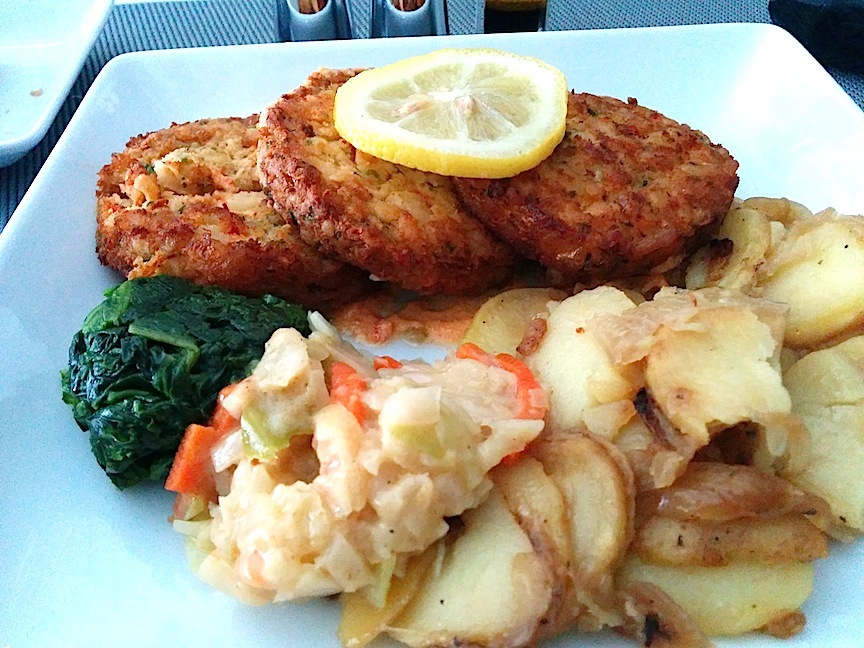 culinary
winning streak was not to last. Seasonal greens with
fresh vegetables, asparagus and pesto mozzarella
with honey Dijon dressing may have been better
described as “grass with gloop.” The oversweet honey
Dijon dressing would never get through French
customs. If Paula Lambert of The Mozzarella
Company in Dallas had made the airline’s cheese, she
could have used it to fill holes in the Deep Ellum
sidewalk, not for human consumption.
culinary
winning streak was not to last. Seasonal greens with
fresh vegetables, asparagus and pesto mozzarella
with honey Dijon dressing may have been better
described as “grass with gloop.” The oversweet honey
Dijon dressing would never get through French
customs. If Paula Lambert of The Mozzarella
Company in Dallas had made the airline’s cheese, she
could have used it to fill holes in the Deep Ellum
sidewalk, not for human consumption.
The
entrée was another step up
(confidence-restoring would be too strong a term).
Look at the color of that Chateaubriand (right),
as it is luxuriantly
called. Perfect medium rare and with gratin potatoes
and sautéed leeks that stood up to the strain
of high altitude. The tenderloin wasn’t Prime grade
, but it wasn’t Kevlar either. A reasonable effort.
One of the other
entrées made me think of home. Crab cakes
with spicy hollandaise, warm cabbage, sautéed
greens and roasted potatoes were straight from the
Sam’s Club freezer case. To compensate for the lack
of any crab flavor, they had been weaponized with
salt. To paraphrase a million yelpers, “yum.”
Desserts come on a separate
menu and so they should. The Traditional Ice Cream
Sundae is Ben and Jerry’s vanilla ice cream scooped
into a bowl, drizzled with butterscotch (or hot
fudge) from a jar, and sprinkled with pecans from a
packet and whipped cream from a can. This
masterpiece of culinary technique was so divine that
I wanted to ask for a second one.
All of this gastronomic
excess is yours for about $8,600 each way. Although
the wine list is a compensating bright spot, I am so
glad I used miles to buy my seat as it dulled the
disappointment that the pinnacle of what American
Airlines does is so appallingly bad. It’s only
April, but so far this goes down as my worst meal of
the year.
❖❖❖
By John Mariani
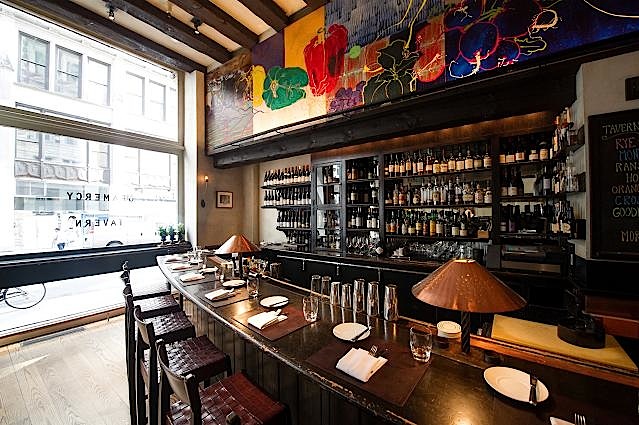 GRAMERCY TAVERN
GRAMERCY TAVERN42 East 20th Street (off Fifth Avenue)
212-477-0777
gramercytavern.com
After
the
huge success of Union Square Café as both
a beacon of good taste in that New York
neighborhood and as a standard for a new form of
American genial hospitality when it opened in
1985, owner Danny Meyer bided his time before
opening another restaurant.
Nine years went by before Meyer
took the plunge with a nearby space whose name,
Gramercy Tavern, aptly described a large
restaurant with an upfront bar (left) serving
engaging small plates and a multi-room dining area
(below)
where then Chef Tom Colicchio expanded people’s
idea of modern American cuisine. Added to this
were a superb wine list and the same warm
hospitality that Meyer had been continually
refining. The accolades came fast: it was
one of 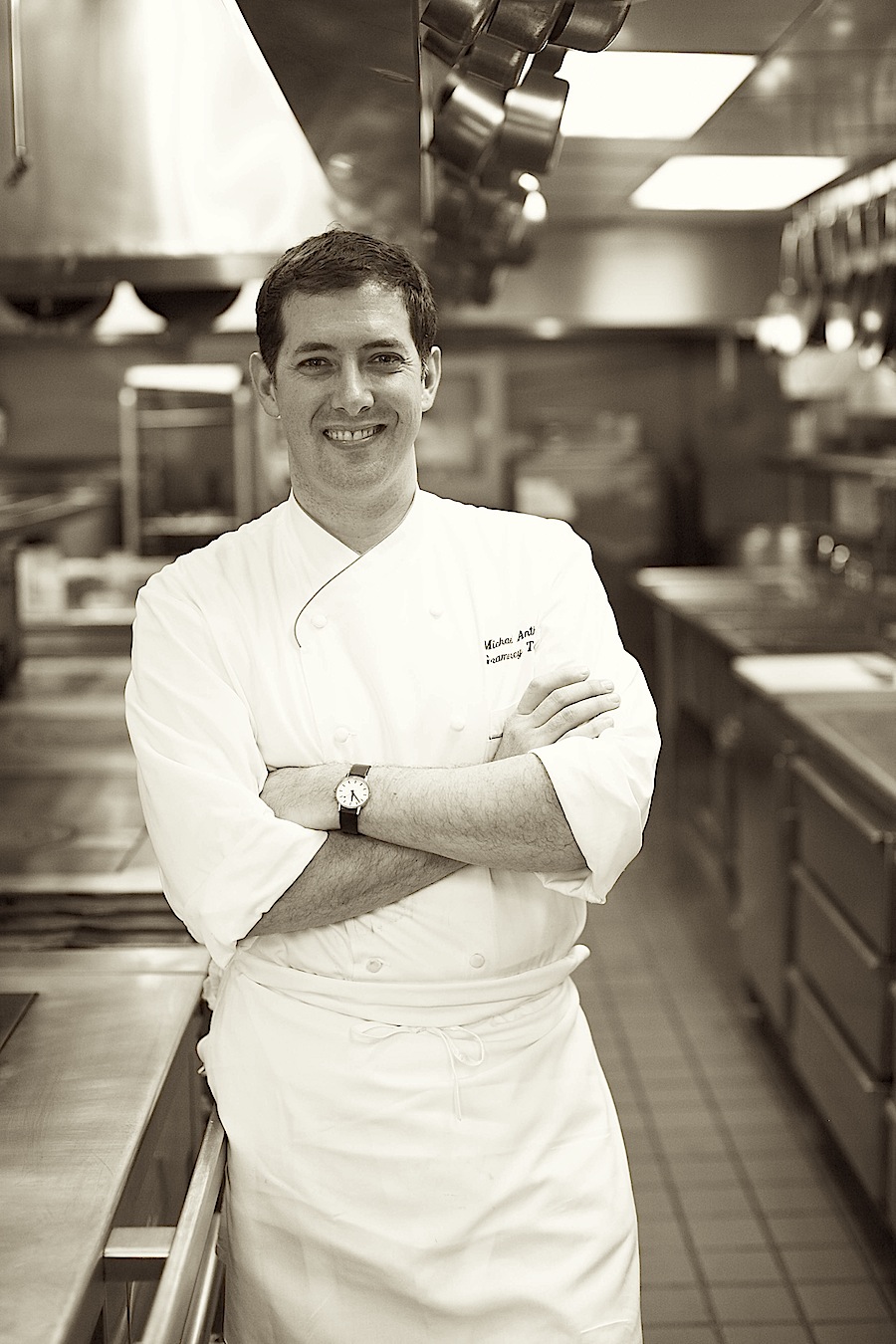 my Best
New Restaurants that year in Esquire.
my Best
New Restaurants that year in Esquire.
In the years since, Gramercy Tavern has rarely had an empty seat, and if you want to dine there without booking weeks in advance, make a rez after nine o’clock and you should be good to go. There are a lot of tables and it can get loud, depending on the people seated near you, but the overall ambiance of the place, which is kind of posh tavern-like, is without a scintilla of pretense.
Colicchio departed long ago to become a food TV celebrity, but his replacement, since 2006, Michael Anthony (right), has proven himself more than an impressive successor. Indeed, Anthony’s cooking has a refinement that has gotten stronger over the years, and, given the numbers of guests he has to cook for each night, it is a marvel that the food arrives with such consistency.
On my last visit there were some uncharacteristic lapses in service (we received no bread until an hour after we sat down) but I count that as a momentary anomaly.
The wine list, overseen by beverage director Juliet Pope, is stronger than ever, with global holdings at every price range.
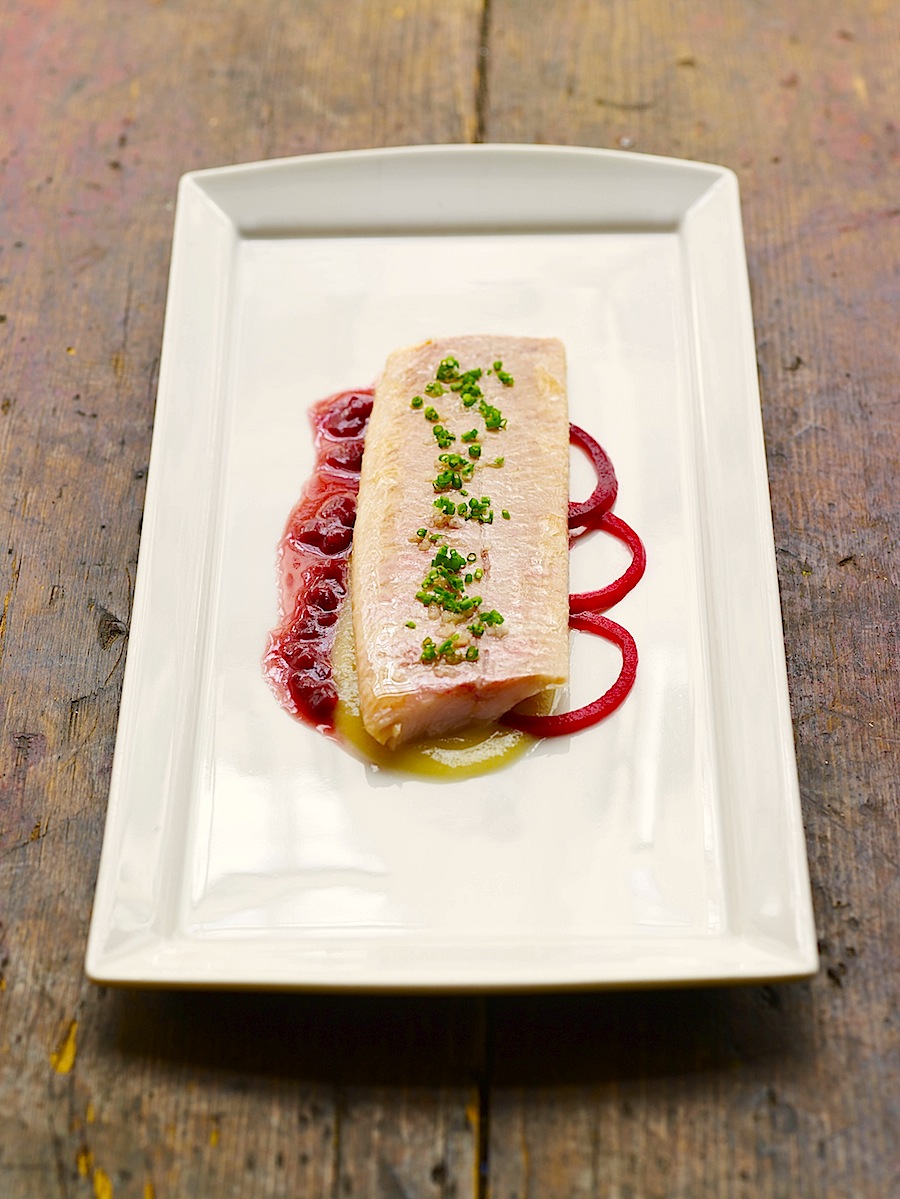 I
was at a table for four, so I had a chance to
taste a great array of dishes, and almost every
dish was carefully conceived and had remarkable
flavor. The start-off amuse of
savory granola with yogurt and arugula was a bit
odd, more like a breakfast item than a dinner
dish, but this was followed by a fine beef tartare
with pine nuts, capers and pickled mushrooms, and
a lustrous smoked trout (left) with cipollini
purée and pickled onions, two dishes whose
sour tang snapped the palate to attention.
I
was at a table for four, so I had a chance to
taste a great array of dishes, and almost every
dish was carefully conceived and had remarkable
flavor. The start-off amuse of
savory granola with yogurt and arugula was a bit
odd, more like a breakfast item than a dinner
dish, but this was followed by a fine beef tartare
with pine nuts, capers and pickled mushrooms, and
a lustrous smoked trout (left) with cipollini
purée and pickled onions, two dishes whose
sour tang snapped the palate to attention.
Lobster pappardelle pasta with chorizo, scallions and small, sweet mussels was sumptuous, while a mushroom custard, sunchokes, trout roe and more pickling, this time burdock, was delicious but not a very generous portion for a starter; it would have made a terrific .
To see how easily a vegetarian can dine here with pleasure, choose a dish like Anthony’s kabocha squash, mushrooms, ricotta and hazelnuts in a luscious mélange, or the glistening grilled carrots, sweetened with honey, a crunch of pistachios and Cremont cheese that lifted the humble carrot to a rich, satisfying level. (There is a six-course $102 vegetarian menu available.)
Flounder was
simply done, with wild rice, shiitake mushrooms
and an enriching lobster sauce, again showing an
intelligent marriage of vegetables and protein in
perfect balance. Black bass, too, was in
tandem with bok choy, sweet potatoes and a creamy
peanut curry sauce. Some very fine,
well-fatted pork loin and deckle--a mottled cut
that you rarely see--was wonderfully matched with
bitter collards, starchy black lentils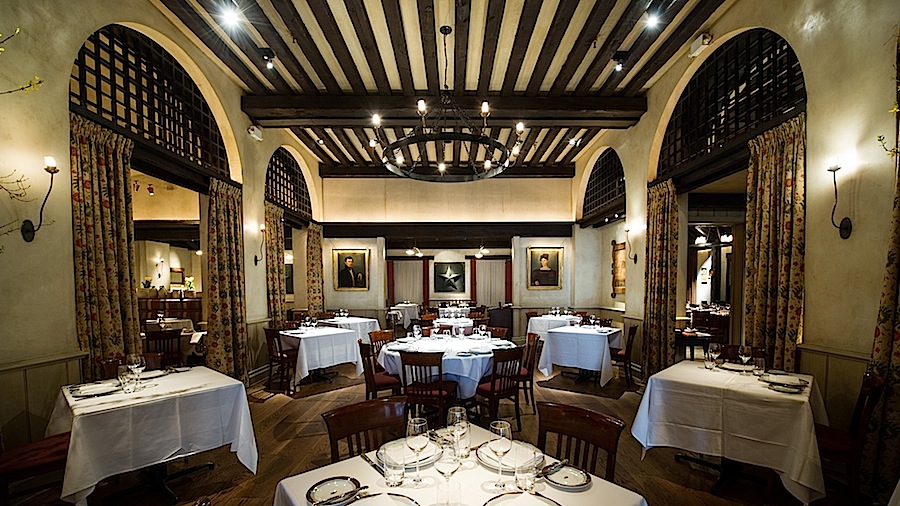 and light
kohlrabi.
and light
kohlrabi.
The first of the desserts was a sweet and tangy grapefruit granité with lime and avocado, which nearly worked; much better was lemon sherbet with poppy seeds, ricotta, hazelnuts and thyme, and then came the big gun sweets--coconut pudding with mango, passion fruit, pistachio and just a hint of sweet basil; and an amusing chocolate banana slice dressed with caramel, sesame and black cardamom and shot of dark rum. The send-off was a happy little coconut and marshmallow fluff cake, almost like a reward for finishing all the veggies.
The meal had such a cogent, focused, almost thematic consistency based on the season’s vegetables--the Union Square Green Market is nearby the restaurant--but it also showed the individual spirit of Michael Anthony, who has few peers for this kind of elegant but approachable food without modernist interference.
So, now two decades old, Gramercy Tavern sails on the calm waters of consistent good taste and attention to the natural order of things in the garden, farm and sea. It’s a way of cooking whose style is sorely missed in so many of the new flashes in the pan.
Gramercy Tavern is open for lunch Mon.-Fri, and for dinner nightly. At dinner the vegetable tasting course is $102, the seasonal menu $120; a 3-course menu is $92 fixed price.
❖❖❖
By John Mariani
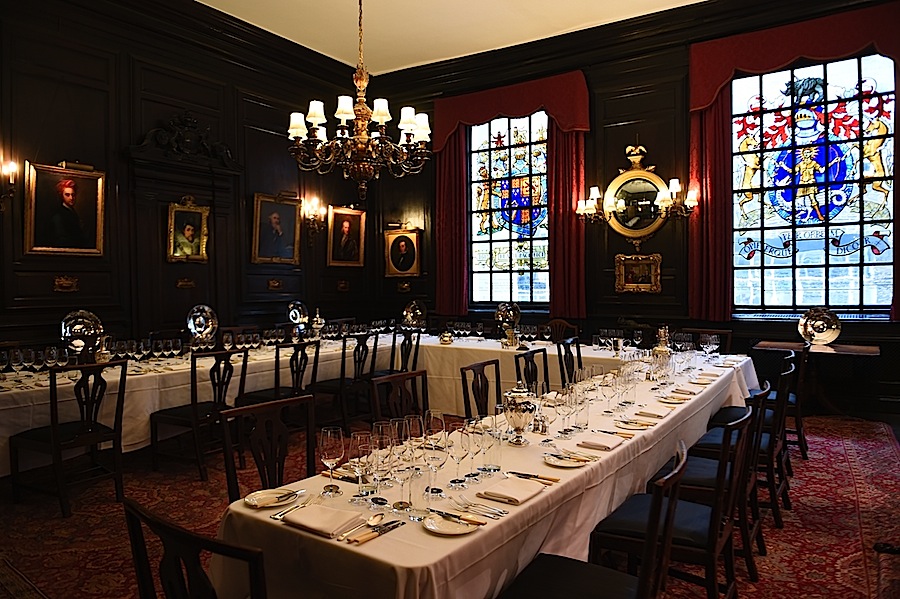 The
idea of someday opening Australia’s most
illustrious winery was surely not on the mind of
Christopher Rawson Penfold (below) back in 1833 when he took
his medical exams at London’s Apothecaries’ Hall
(left)--the
same premises where, this April, Penfolds held
an anniversary luncheon commemorating the
winery’s 170 years in business.
The
idea of someday opening Australia’s most
illustrious winery was surely not on the mind of
Christopher Rawson Penfold (below) back in 1833 when he took
his medical exams at London’s Apothecaries’ Hall
(left)--the
same premises where, this April, Penfolds held
an anniversary luncheon commemorating the
winery’s 170 years in business.
During the meal, attended by wine media, negociants, sellers and collectors, in the same room where Dr. Penfolds would have received his degree, several of the estate's wines were poured, including the Yattarna 2011, one of the most expensive chardonnays in the world at $130, made from grapes harvested entirely in Tasmania; Barossa RWT [Red Wine Making Trial] Shiraz 2004 ($150), a big, bold red whose grapes are sourced from vines planted a century ago; and its iconic signature Grange 1999 ($400)--now almost impossible to find--made from 100 percent shiraz; and Great Grandfather Tawny NV ($350), which is said to reflect the tastes of such fortified wines two centuries ago.
Dr.
Penfolds and his wife, Mary, re-located from
London in 1843 to South Australia, where they
purchased 500 acres they called the  Magill Estate, a small
part of which they devoted to growing grapes to
make fortified wines popular in their day. After
the doctor’s death in 1870, Mary remained
committed to the winery and it stayed within the
family, which retained a majority interest until
1976, after going public in 1962. The company is
now called Treasury Wine Estates.
Magill Estate, a small
part of which they devoted to growing grapes to
make fortified wines popular in their day. After
the doctor’s death in 1870, Mary remained
committed to the winery and it stayed within the
family, which retained a majority interest until
1976, after going public in 1962. The company is
now called Treasury Wine Estates.
Today the company owns two wineries, the original Magill Estate and Nuriootpa in the Barossa Valley, and it is widely considered one of Australia’s greatest wineries, pioneers of New World shiraz but also producing a wide range of white, red and fortified wines. In 2012 Penfolds released a “Block 42” 2004 sold in sealed glass ampoules for $168,000 each--the world’s most expensive bottlings at that time.
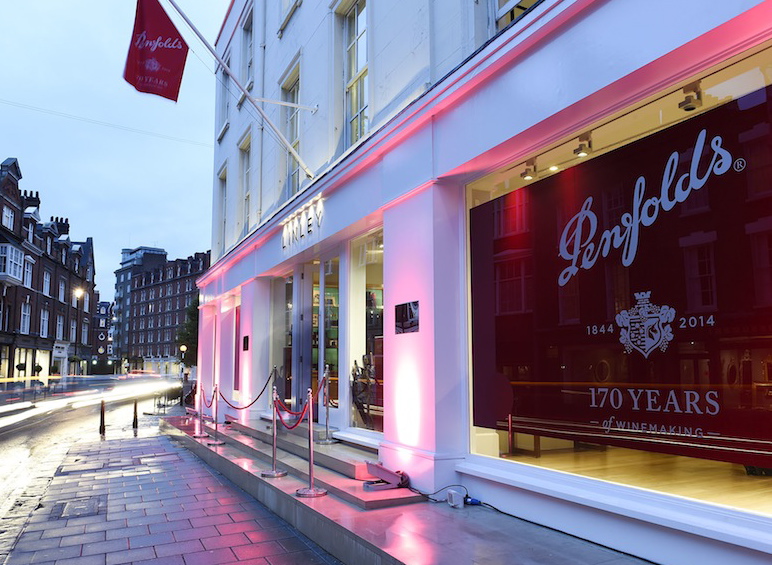 For
the 170th anniversary in London, Penfolds
celebrated by linking up with one of London’s
most glamorous design and furniture companies,
Linley (left)
on Pimlico Road, to place an imperial bottle
(the size of eight regular 750 ml bottles) of
Bin 170 Kalimna Shiraz 2010 into a
bespoke wooden case marked with a
compass whose lock opens only if turned to the
longitude and latitude of the Magill Estate and
which hides a secret drawer containing a
photographic journey of Kalimna Block 3C as well
as a Certificate of Authenticity. To assure the
perfect ambiance for the wine in any room it
might reside, the case also contains a synthetic
hygrometer and bimetal thermometer. The
boxes--only seven were made--were said to have
taken 80 hours to craft and another 40 to
polish, plate and engrave.
For
the 170th anniversary in London, Penfolds
celebrated by linking up with one of London’s
most glamorous design and furniture companies,
Linley (left)
on Pimlico Road, to place an imperial bottle
(the size of eight regular 750 ml bottles) of
Bin 170 Kalimna Shiraz 2010 into a
bespoke wooden case marked with a
compass whose lock opens only if turned to the
longitude and latitude of the Magill Estate and
which hides a secret drawer containing a
photographic journey of Kalimna Block 3C as well
as a Certificate of Authenticity. To assure the
perfect ambiance for the wine in any room it
might reside, the case also contains a synthetic
hygrometer and bimetal thermometer. The
boxes--only seven were made--were said to have
taken 80 hours to craft and another 40 to
polish, plate and engrave.
The wine itself was made from
a single vineyard from old vines, with all
grapes handpicked; unblended with other wines,
it spends 16 months in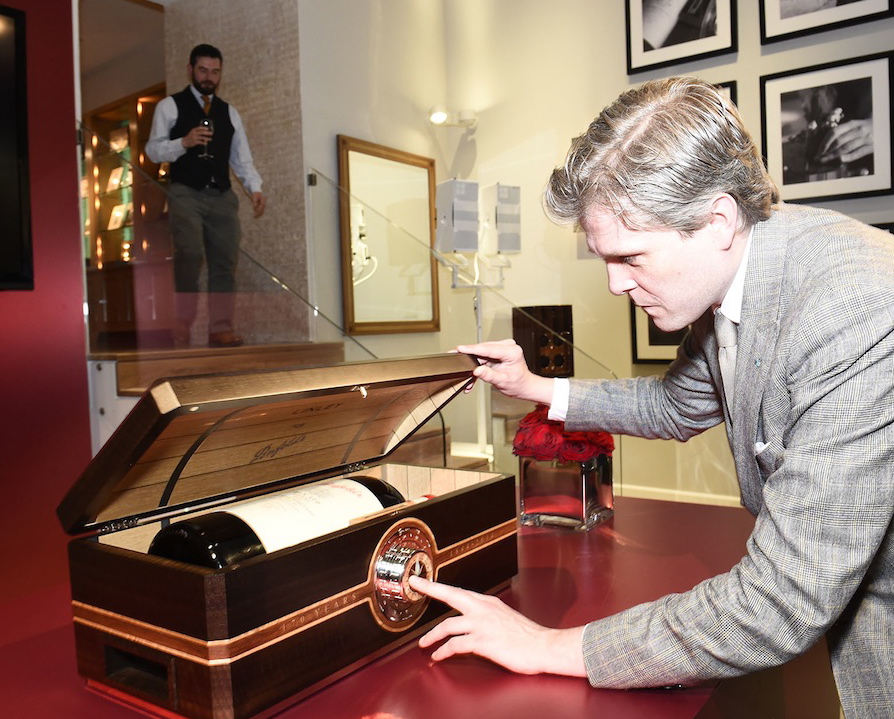 French
oak. The last time this wine was made was in
1973.
French
oak. The last time this wine was made was in
1973.
The wine and case together sell for $60,000, with each buyer’s name and bottle number customized by Linley. Out of 5,544 bottles of the wine made, only 240 will go to the U.S., for $1,800 a bottle.
In addition, Penfolds has installed an intimate namesake wine room within the Linley store where its wines may be tasted--free of charge, because the store has no license to sell wine.
The next day I had a chance to taste more Penfolds wines at a spectacular new wine shop named Hedonism and at one of London’s most historic wine stores, Berry Brothers & Rudd (below), whose clients, since 1698, have included the Royal Family, Lord Byron and the Aga Khan. Sixty-nine cases of the firm's wines were on the Titanic when it sank in 1912.
Over a
lunch of hen’s eggs and asparagus, braised ox
cheeks and Cumbrian beef, and chocolate dessert
with citrus jelly, we drank a Penfolds Reserve
Bin 09A Chardonnay 2009 ($130); Grange 1989
(difficult to find 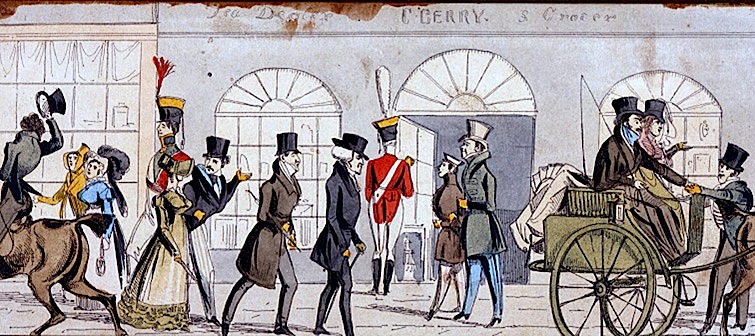 except on
eBay!); and Bin 7 Kalimna Cabernet Sauvignon
1967 ($1,285), which, like all the Penfolds reds
I tasted, showed a remarkable vigor and
maturation despite their age. The 1967
still had mellow tannins, the aroma of truffles,
and the fine fruit of the shiraz grape.
except on
eBay!); and Bin 7 Kalimna Cabernet Sauvignon
1967 ($1,285), which, like all the Penfolds reds
I tasted, showed a remarkable vigor and
maturation despite their age. The 1967
still had mellow tannins, the aroma of truffles,
and the fine fruit of the shiraz grape.
(Be aware that most of these wines come in very small quantities to the U.S. market, but Penfolds Bin 389, aged in American oak and often called “Baby Grange,” and Bin 407 Cabernet Sauvignon, both $69, as well as Bin 28 Kalimna Shiraz at $30 have good distribution in the States.)
It was quite a celebratory weekend, especially for an Australian wine whose London-bred and educated founder left England to seek a livelihood in a new world ten thousand miles away. But no matter how long it takes, it’s always nice to come home to brag.
To see how Bin 170 was made, watch the video here: http://www.youtube.com/watch?v=CKZdxX6bixs>
❖❖❖
 OR HE MIGHT HAVE JUST BEEN JARED LETO
OR HE MIGHT HAVE JUST BEEN JARED LETO
"The night of the lunar eclipse, I was having a late
supper at Red
Medicine out on Wilshire, a few tables
over from a man who had decided to dress as Jesus for
the evening, a slender young man with long, straight
hair and white robes flowing around his ankles. I can't
be sure, but I think he ordered the tasting
menu."--Jonathan Gold, "Red Medicine, a little
like punk rock and splendid in its own way," LA Times (4/25/14)
SHOW ME YOUR
HEINEKEN AND
I'LL SHOW YOU MY ST. PAULEY'S GIRL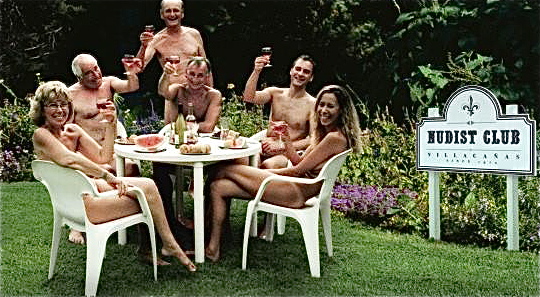
A Beer Festival on June 28 will be held at Sunny Rest Resort in Palmerton, PA, a "relaxed clothes-free resort."
Any of John Mariani's
books below may be ordered from amazon.com.
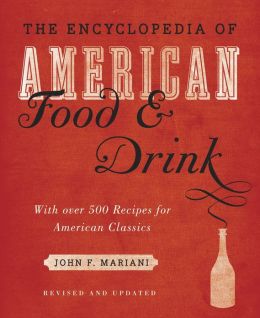 |
The Encyclopedia of American Food and Drink by John F. Mariani (Bloomsbury USA, $35) Modesty forbids me to praise my own new book, but let me proudly say that it is an extensive revision of the 4th edition that appeared more than a decade ago, before locavores, molecular cuisine, modernist cuisine, the Food Network and so much more, now included. Word origins have been completely updated, as have per capita consumption and production stats. Most important, for the first time since publication in the 1980s, the book includes more than 100 biographies of Americans who have changed the way we cook, eat and drink -- from Fannie Farmer and Julia Child to Robert Mondavi and Thomas Keller. "This book is amazing! It has entries for everything from `abalone' to `zwieback,' plus more than 500 recipes for classic American dishes and drinks."--Devra First, The Boston Globe. "Much needed in any kitchen library."--Bon Appetit. |
"Eating Italian will never be the same after reading John Mariani's entertaining and savory gastronomical history of the cuisine of Italy and how it won over appetites worldwide. . . . This book is such a tasteful narrative that it will literally make you hungry for Italian food and arouse your appetite for gastronomical history."--Don Oldenburg, USA Today. "Italian
restaurants--some good, some glitzy--far
outnumber their French rivals. Many of
these establishments are zestfully described
in How Italian Food Conquered the World, an
entertaining and fact-filled chronicle by
food-and-wine correspondent John F.
Mariani."--Aram Bakshian Jr., Wall Street
Journal.
"Equal parts
history, sociology, gastronomy, and just
plain fun, How Italian Food Conquered the
World tells the captivating and delicious
story of the (let's face it) everybody's
favorite cuisine with clarity, verve and
more than one surprise."--Colman Andrews,
editorial director of The Daily
Meal.com. "A fantastic and fascinating
read, covering everything from the influence
of Venice's spice trade to the impact of
Italian immigrants in America and the
evolution of alta cucina. This book will
serve as a terrific resource to anyone
interested in the real story of Italian
food."--Mary Ann Esposito, host of PBS-TV's
Ciao
Italia. "John Mariani has written the
definitive history of how Italians won their
way into our hearts, minds, and
stomachs. It's a story of pleasure over
pomp and taste over technique."--Danny Meyer,
owner of NYC restaurants Union Square
Cafe, The Modern, and Maialino.
|
 |
 |
 |
 |
 |
 |
 |
 |
 Everett Potter's Travel Report:
Everett Potter's Travel Report: 
 Eating Las Vegas
is the new on-line site for Virtual Gourmet
contributor John A. Curtas., who since 1995
has been commenting on the Las Vegas food
scene and reviewing restaurants for Nevada
Public Radio. He is also the
restaurant critic for KLAS TV, Channel 8 in
Las Vegas, and his past reviews can be
accessed at KNPR.org.
Click on the logo below to go directly to
his site.
Eating Las Vegas
is the new on-line site for Virtual Gourmet
contributor John A. Curtas., who since 1995
has been commenting on the Las Vegas food
scene and reviewing restaurants for Nevada
Public Radio. He is also the
restaurant critic for KLAS TV, Channel 8 in
Las Vegas, and his past reviews can be
accessed at KNPR.org.
Click on the logo below to go directly to
his site.

Tennis Resorts Online: A Critical Guide to the World's Best Tennis Resorts and Tennis Camps, published by ROGER COX, who has spent more than two decades writing about tennis travel, including a 17-year stretch for Tennis magazine. He has also written for Arthur Frommer's Budget Travel, New York Magazine, Travel & Leisure, Esquire, Money, USTA Magazine, Men's Journal, and The Robb Report. He has authored two books-The World's Best Tennis Vacations (Stephen Greene Press/Viking Penguin, 1990) and The Best Places to Stay in the Rockies (Houghton Mifflin, 1992 & 1994), and the Melbourne (Australia) chapter to the Wall Street Journal Business Guide to Cities of the Pacific Rim (Fodor's Travel Guides, 1991).


MARIANI'S VIRTUAL GOURMET
NEWSLETTER is published weekly. Editor/Publisher: John
Mariani.
Editor: Walter Bagley. Contributing Writers: Christopher Mariani,
Robert Mariani, John A.
Curtas, Edward Brivio, Mort Hochstein, Suzanne
Wright, and Brian Freedman. Contributing
Photographers: Galina Stepanoff-Dargery,
Bobby Pirillo. Technical Advisor: Gerry McLoughlin.
To un-subscribe from this newsletter,click here.
© copyright John Mariani 2014
